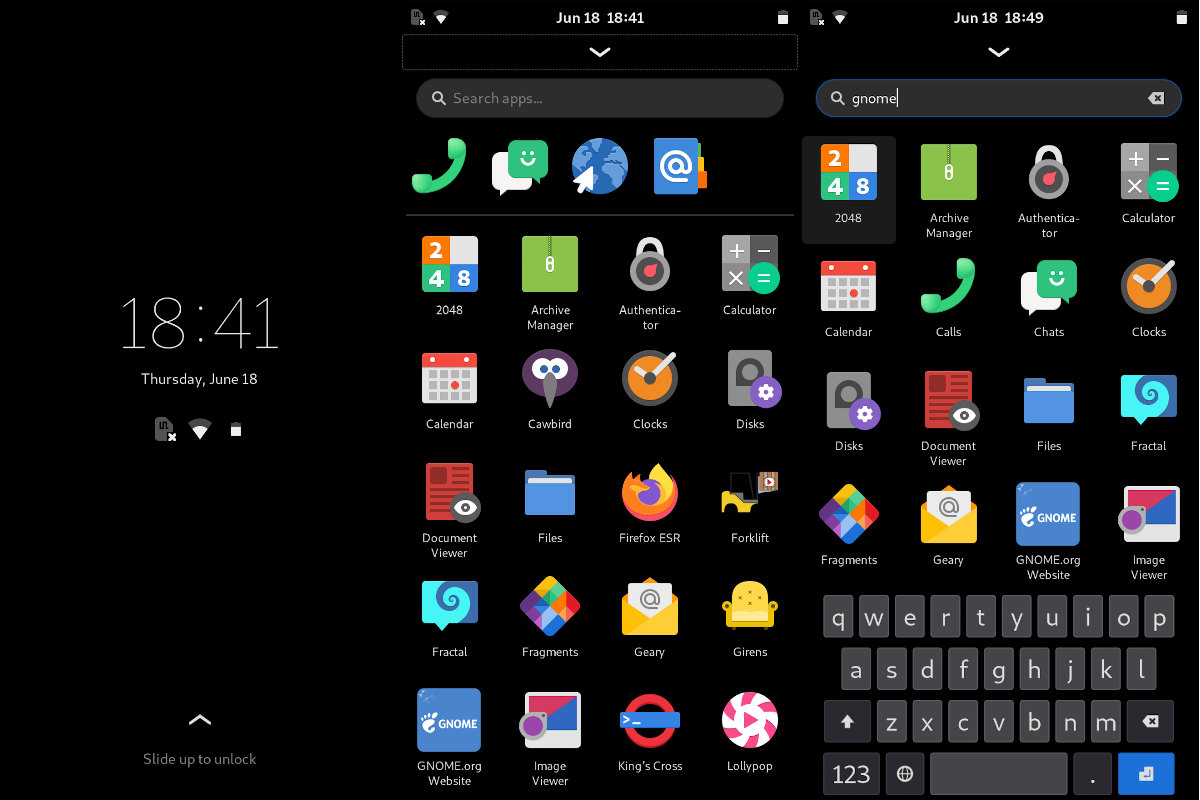2020 is the year of the Linux phone. Sort of… At least, we now have smartphones that ships with Linux thanks to PinePhone and Librem 5, and several Linux mobile operating systems with Ubuntu Touch based UBPorts, postmarketOS, and others.
Mobian is another Linux distribution which as its name implies is based on Debian and targets mobile devices. Interestingly, the project relies on Purism Phosh phone shell/user interface used in Librem 5, but the first Mobian image has been released for PinePhone with plans for PineTab and Librem 5 support coming later.

Mobian supports a nice list of apps include Chromium, Firefox ESR, Calls, Files, Telegram messaging app, MPV media player, GNOME 2048, and more
3D graphics works, you can make phone calls, browse the web, and use GPS/GNSS applications, but it’s still work in progress as for example, USB and the camera does not work, the phone may take a while to wake-up when receiving a phone call, WiFi may be unreliable in some conditions, and so on.
You’ll find instructions to get started, the status of apps and hardware support in the Wiki.
Via Liliputing and 9to5Linux

Jean-Luc started CNX Software in 2010 as a part-time endeavor, before quitting his job as a software engineering manager, and starting to write daily news, and reviews full time later in 2011.
Support CNX Software! Donate via cryptocurrencies, become a Patron on Patreon, or purchase goods on Amazon or Aliexpress





Manjaro also has an image with phosh:
https://forum.manjaro.org/t/manjaro-arm-alpha1-with-phosh/151630
Since Android is Linux with Java, can some one explain why these Linux phones find it hard to provide features? Huawei has Linux in China for phones, if i remember correctly.
Also there was the short lived Firefox OS. I had one of the ZTE phones with the OS.
Android is a specific (usually somewhat old) version of the Linux kernel, plus some binary drivers required for a specific device which only work with that particular version, and an entire software stack written in Java instead of any of the libraries or system components that make a standard Linux operating system useful (like system initialization, graphics and sound support, etc.)
So basically, none of the software in Android is at all useful if you want a phone that’s able to run any Linux applications. You have to choose between an Android installation that can only run Android applications written in Java, or a Linux installation that needs to reverse engineer all of the drivers needed to operate the hardware and use/write applications for phone functionality which have not yet been used on actual phones in enough numbers for developers to have worked out all the bugs yet.
The reason is that android is proprietary software on top of Linux. Its not technical reasons, but legal reasons that prohibit the reuse of existing technology.
Because Linux images on the pinephone are trying to be 100% open-source and stripped of google controlled code. The community, the pine64 team and purism have to make the same progress android did in 12 years while adhering to traditional desktop Linux values.
If you only care about your phone working and don’t mind a niche package manager and a custom DE, then you can install ubuntu touch.
Android without Google crap exists and opensource phone DE as well. For many years. Problems is below that layer – in the most expensive part. Pinephone = Pine64 + LCD + GSM module. Pine64 – which came out about 5 years ago was liberated and mainlined mainly by people around sunxi / armbian. Pine64 is just one out of many Allwinner SoC chips. Once its liberated it can be easily used by any traditional Linux distribution, which usually have to rely to upstream kernel only. The main problem about Pinephone is that Allwinner A64 SoC is old, slow, consumes too much, sw is also not matured yet. Good for playing around. good for moving things on, good for promotion but IMO not really a thing that one would use daily.
What do you mean by features?
The problem is that android comes with mostly binary only drivers, hacked together bsp kernels, sometimes even with sources, mostly no licence info and all based on a heavily patched kernel originating in neolithic age.
So not easy to run a proper linux on such a base. And the chinese domestic smartphones arw also android, just minus google, FF OS used an Android kernel. And once you pay enough as an oem you get access to the right bsp, but again no mainline, a hell to maintain if you have the wish to actually maintain anything.
PinePhone Mobian CE phone will become available on January 1, 2021.